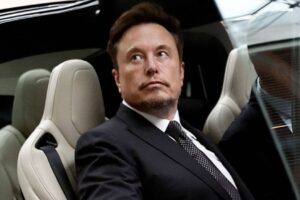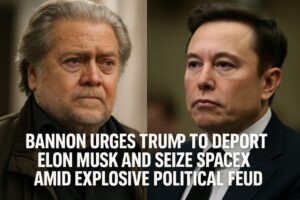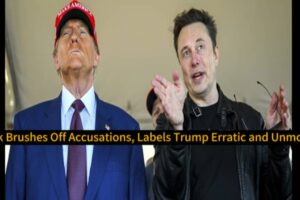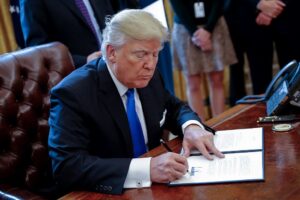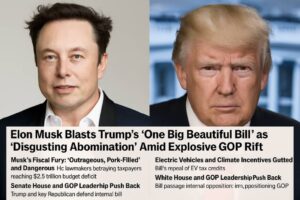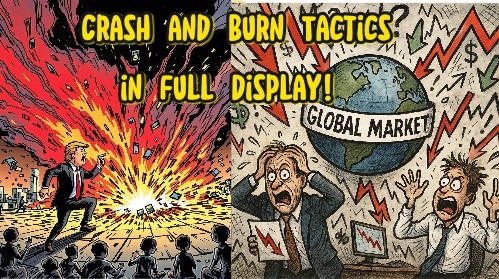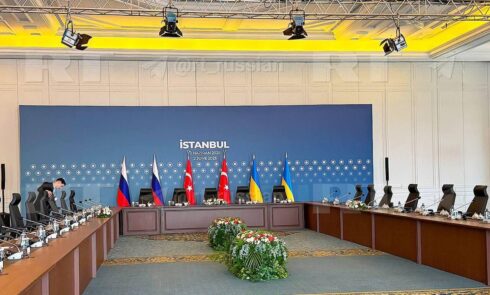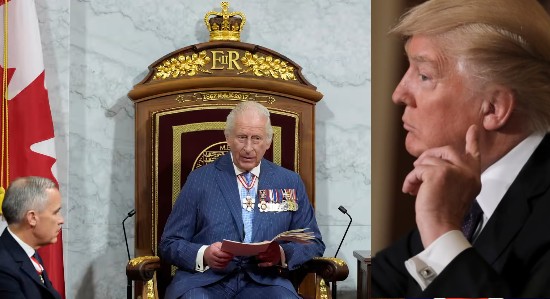Global Market: Announced on April 4, the Trump administration’s tariff strategy is as bold as it is bewildering. It proposes a baseline 10% tariff on virtually all imports, regardless of origin, and slaps an extraordinary 50% tariff on Chinese goods — unless Beijing reverses its newly imposed 34% retaliatory tariffs by April 8. No exemptions. No phased rollout. No negotiation window.
According to administration estimates, the U.S. imported $600 billion in goods from China in 2024. Under this plan, a 50% tariff equates to $300 billion in import taxes — revenue which the White House insists will be used to “protect American jobs.” But economists argue the logic is fatally flawed: the money doesn’t come from China; it comes out of the pockets of U.S. businesses and consumers.
Furthermore adding chaos to the global market, if trade volume declines due to increased costs — a near certainty — then the so-called revenue stream vanishes. And there’s no mechanism to return any proceeds to affected Americans. In short, it’s a policy taxing Americans to hurt themselves.
Economic Self-Sabotage: The Real Price of the Tariffs on Global Market
While the administration touts potential revenues, experts emphasize the real cost: higher prices, supply chain chaos, and job losses across critical sectors. From automakers to electronics retailers to agricultural exporters, businesses are reeling from uncertainty and rising expenses.
The Chinese response was swift and punishing. Beijing imposed 34% tariffs on $200 billion worth of U.S. goods — including soybeans, energy exports, and industrial machinery. With canceled contracts and plummeting crop prices, American farmers are among the first casualties.
“This isn’t a strategy,” warned JPMorgan CEO Jamie Dimon. “It’s an economic trap. It’s not China paying these tariffs — it’s American companies and families.” Inflationary pressures, already straining households post-pandemic, now threaten to surge even further due to elevated consumer goods prices at stores like Walmart, Amazon, and Home Depot.
Global Market in Chaos: From Wall Street to Tokyo
The shockwaves extended far beyond American borders. Deutsche Bank labeled the plan the “biggest shock to global market since the 1970s.” Investors dumped equities at a historic pace, interpreting the tariffs not as negotiation leverage but as evidence of erratic policymaking.
In Asia, stock markets buckled under the pressure. Taiwan posted its worst one-day performance ever. Japanese markets were suspended mid-session. The ripple effect continued into Europe — Germany’s DAX, France’s CAC, and the UK’s FTSE all plummeted. Oil-rich nations like Saudi Arabia saw market corrections, and even resource-exporting Australia and non-targeted Russia recorded steep losses.
The message from the global market was unanimous: this isn’t a tactical maneuver — it’s a crisis.
No Strategy, No Sunset Clause, No Exit Plan
Perhaps the most alarming aspect of the tariff plan is the complete absence of a defined strategy. There are no structured exemptions or diplomatic overtures. U.S. allies, from Canada to the European Union, have voiced confusion and frustration.
China, meanwhile, has not only retaliated but escalated, filing complaints with the World Trade Organization and hinting at rare earth export restrictions. European leaders have called for a “zero-for-zero” tariff pact but are also preparing countermeasures. A senior EU diplomat put it bluntly: “You don’t threaten global supply chains and then act surprised when the world economy wobbles.”
The administration’s position remains fixed, even as its logic falters. There is no phased de-escalation pathway, no signaling to calm the global market, and no modelled endgame — just a bet that others will blink first.
Who Are We Kidding? The White House Knows It’s Not Working — But Won’t Back Down
Behind closed doors, even top White House officials are reportedly alarmed by the blowback. Yet publicly, the administration has rejected any notion of pausing or revising the tariff program. Multiple departments — Treasury, Commerce, and the U.S. Trade Representative — are said to be in damage control mode, frantically reviewing options to stem the economic bleeding.
But there’s a political cost to reversing course. Admitting error undercuts the image of strength that President Trump has cultivated. As one analyst noted, “They know they’re flying blind. But the fear of political embarrassment outweighs the economic pain — for now.”
In the meantime, Wall Street analysts, international allies, and American voters are left wondering how far the administration is willing to go in pursuit of an undefined “win.”
A Global Own-Goal With No Victors: Global Market in Downward Spiral
What began as a bold play for economic dominance has rapidly devolved into a high-risk game with no winners. American farmers, manufacturers, small businesses and the global market are bearing the brunt. Consumer prices are set to climb, and layoffs loom across affected sectors.
More critically, the tariffs are alienating traditional allies while strengthening economic ties between China, Russia, and other major economies. American leadership on the global economic stage is eroding — and fast.
As the dust settles, one fact remains clear: this was a self-inflicted wound. A policy born of political bravado, implemented without guardrails, has brought the world’s financial system to the brink. And without immediate course correction, the aftershocks may only grow more severe.

